Frédéric Borges
Professor in Food Microbiology
University of Lorraine
Ecole Nationale Supérieure d'Agronomie et des Industries Alimentaires (ENSAIA)
Laboratoire d'Ingénierie des Biomolécules (LIBio)
I’m a food microbiologist at the University of Lorraine in France. My research focuses on the engineering of fermented food ecosystems. The objective is to design new approaches to engineering microbial cultures for the food industry. The targeted application is mainly biopreservation, a sustainable approach to increase food safety and extend food shelf-life in order to reduce food waste. My team has developed high-throughput phenotyping approaches to study the behaviour of candidate microorganisms in a multi-dimensional space. The ambition is to take into account the ecosystemic complexity of foods in order to obtain food microbiomes that are resistant to colonisation by undesirable microorganisms with high robustness. I teach engineering students food safety, biotechnology (omics) and statistical data analysis.
Skills
Topic : Food ecosystem engineering
- Genomics: assembly in Galaxy environment, annotation and comparative genome analysis with MicroScope Mage
- Microbial Diversity: MultiLocus Sequence Typing (MLST), taxonomic identification
- Community structure: metabarcoding in Galaxy and R
- High-Throughput phenotyping: bacterial collection screening, Inhibition graph analysis
- Data analysis: data manipulation and statistical analysis with the R programming language
Topic : molecular pathogenesis of Streptococcus agalactiae
- Genetic engineering: heterologous protein expression, mutant construction
- Immunoassays: Western Blots, ELISA
- Bacteria-host interaction: cell line culture, adhesion and invasion assays
Featured Publications
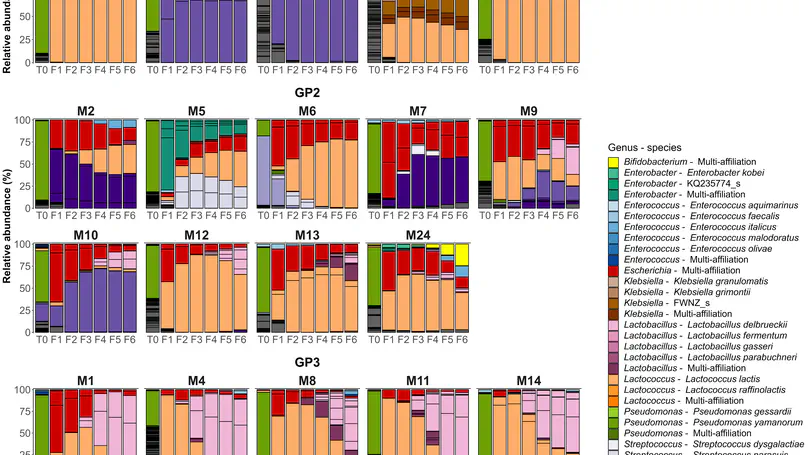
Microbial communities offer considerable potential for tackling environmental challenges by improving the functioning of ecosystems. Top-down community engineering is a promising strategy that could be used to obtain communities of desired function. However, the ecological factors that control the balance between community shaping and propagation are not well understood. Dairy backslopping, which consists of using part of the previous production to inoculate a new one, can be used as a model engineering approach to investigate community dynamics during serial propagations. In this study, 26 raw milk samples were serially propagated 6 times each, giving rise to 26 community lineages. Bacterial community structures were analyzed by metabarcoding, and acidification was recorded by pH monitoring. The results revealed that different types of community lineages could be obtained in terms of taxonomic composition and dynamics. Five lineages reached a repeatable community structure in a few propagation steps, with little variation between the final generations, giving rise to stable acidification kinetics. Moreover, these stabilized communities presented a high variability of structure and diverse acidification properties between community lineages. Besides, the other lineages were characterized by different levels of dynamics leading to parallel or divergent trajectories. The functional properties and dynamics of the communities were mainly related to the relative abundance and the taxonomic composition of lactic acid bacteria within the communities. These findings highlight that short-term schemes of serial fermentation can produce communities with a wide range of dynamics and that the balance between community shaping and propagation is intimately linked to community structure.
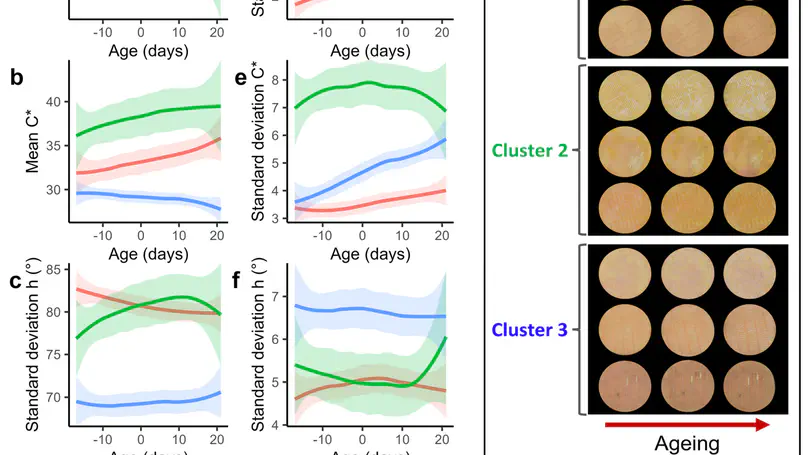
Color is one of the first criteria to assess the quality of cheese. However, very limited data are available on the color heterogeneity of the rind and its relationship with microbial community structure. In this study, the color of a wide range of smear-ripened Munster cheeses from various origins was monitored during storage by photographic imaging and data analysis in the CIELAB color space using luminance, chroma, and hue angle as descriptors. Different levels of inter- and intra-cheese heterogeneity were observed. The most heterogeneous Munster cheeses were the darkest with orange-red colors. The most homogeneous were the brightest with yellow-orange. K-means clustering revealed three clusters distinguished by their color heterogeneity. Color analysis coupled with metabarcoding showed that rinds with heterogeneous color exhibited higher microbial diversity associated with important changes in their microbial community structure during storage. In addition, intra-cheese community structure fluctuations were associated with heterogeneity in rind color. The species Glutamicibacter arilaitensis and Psychrobacter nivimaris/piscatorii were found to be positively associated with the presence of undesirable brown patches. This study highlights the close relationship between the heterogeneity of the cheese rind and its microbiota.
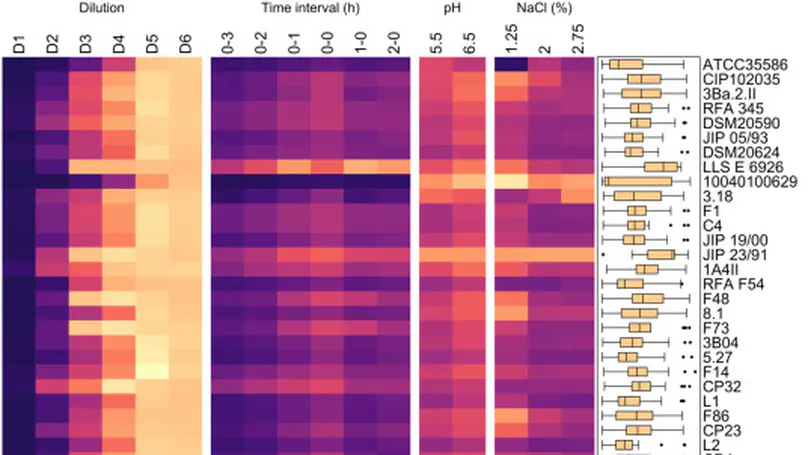
Biopreservation is an approach consisting of using microorganisms as protective cultures and/or their metabolites to optimize the microbiological quality and shelf life of food by ensuring safety or reducing food waste. Biopreservation strain selection pipelines mainly focus on inhibition strength to identify strains of interest. However, in addition to inhibition strength, inhibition activity must be able to be expressed despite significant variations in food matrix properties. In this study, the anti-Listeria monocytogenes EGDelux properties of a collection of 77 Carnobacterium maltaromaticum strains were investigated by high throughput competition assays under varying conditions of co-culture inoculation level, time interval between inoculation with C. maltaromaticum and L. monocytogenes, pH, and NaCl, resulting in 1309 different combinations of C. maltaromaticum strains and culture conditions. This screening led to the selection of two candidate strains with potent and robust anti-L. monocytogenes activities. Deferred growth inhibition assays followed by halo measurements, and liquid co-culture followed by colony counting, revealed that these two strains exhibit a wide anti-Listeria spectrum. Challenge tests in Camembert and Saint-Nectaire cheese revealed both strains were able to inhibit a cocktail of five strains of L. monocytogenes with high potency and high reproducibility. These results highlight the importance of including the robustness criterion in addition to potency when designing a strain selection process for biopreservation applications.
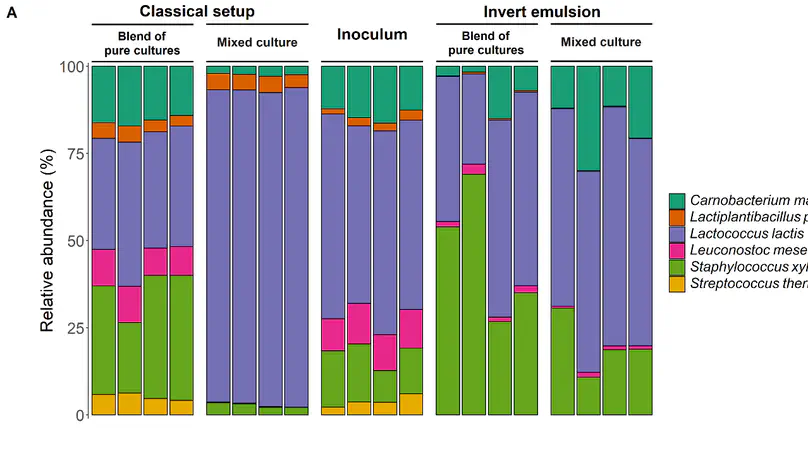
Microbial communities harbor important biotechnological potential in diverse domains, however, the engineering and propagation of such communities still face both knowledge and know-how gaps. More specifically, culturing tools are needed to propagate and shape microbial communities, to obtain desired properties, and to exploit them. Previous work suggested that micro-confinement and segregation of microorganisms using invert (water-in-oil, w/o) emulsion broth can shape communities during propagation, by alleviating biotic interactions and inducing physiological changes in cultured bacteria. The present work aimed at evaluating invert emulsion and simple broth monophasic cultures for the propagation and shaping of bacterial communities derived from raw milk in a serial propagation design.
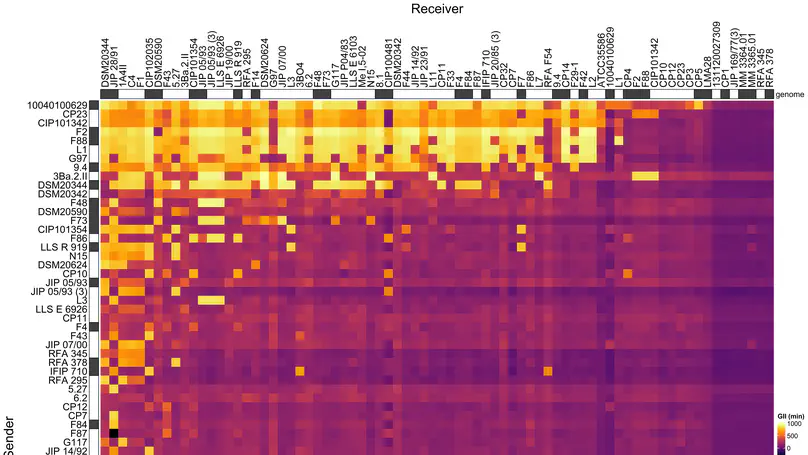
Carnobacterium maltaromaticum is a non-starter lactic acid bacterium (LAB) of interest in the dairy industry for biopreservation. This study investigated the interference competition network and the specialized metabolites biosynthetic gene clusters (BGCs) content in this LAB in order to explore the relationship between the antimicrobial properties and the genome content. Network analysis revealed that the potency of inhibition tended to increase when the inhibition spectrum broadened, but also that several strains exhibited a high potency and narrow spectrum of inhibition. The C. maltaromaticum strains with potent anti-L. monocytogenes were characterized by high potency and a wide intraspecific spectrum. Genome mining of 29 strains revealed the presence of 12 bacteriocin BGCs four of class I and eight of class II, among which seven belong to class IIa and one to class IIc. Overall, eight bacteriocins and one nonribosomal peptide synthetase and polyketide synthase (NRPS-PKS) BGCs were newly described. The comparison of the antimicrobial properties resulting from the analysis of the network and the BGC genome content allowed us to delineate candidate BGCs responsible for anti-L. monocytogenes and anti-C. maltaromaticum activity. However, it also highlighted that genome analysis is not suitable in the current state of the databases for the prediction of genes involved in the antimicrobial activity of strains with a narrow anti-C. maltaromaticum activity.
Recent Publications
Data Repositories
Supervised theses
The laboratory
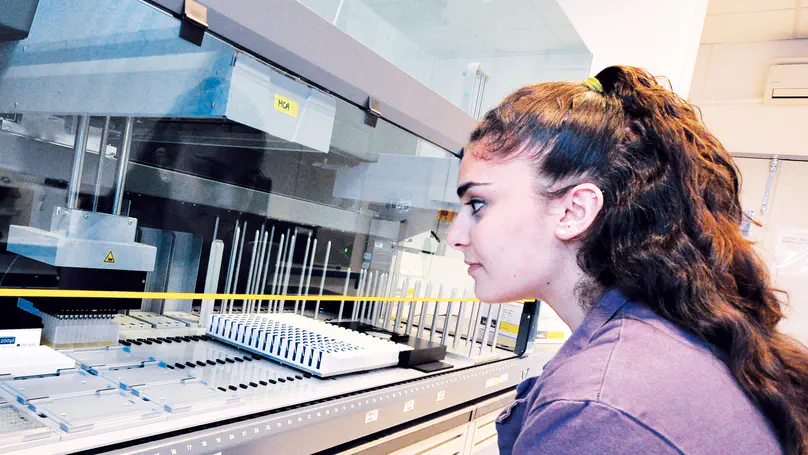
The lab The Biomolecular Engineering Laboratory (Laboratoire d’Ingénierie des Biomolécules - LIBio) research staff is a multi-skilled team organised in two research axis. The objective of the first axis is to understand the complexity of biotic and abiotic interactions within ecosystems in a strategy of innovation and security.
Job/PhD offers
Contact
- frederic.borges@univ-lorraine.fr
- +33 (0)3 72 74 40 85
- 2, avenue de la Forêt de Haye, BP 20163, Nancy, 54230